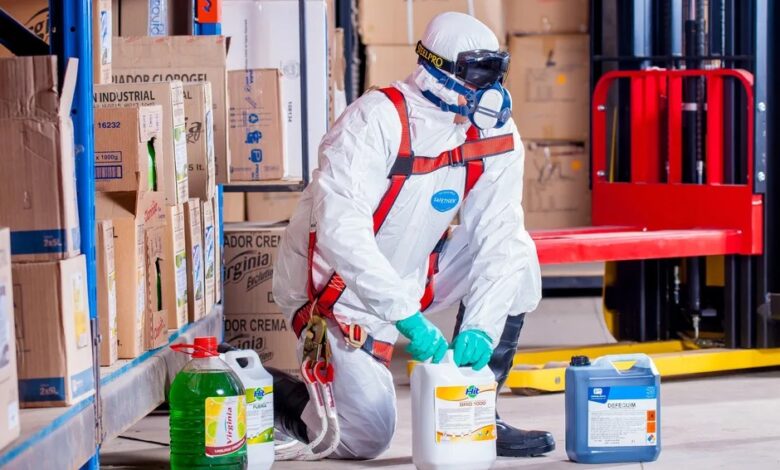How to Prevent Chemical Exposure at Work

Is the workplace safe? It’s a question everyone deserves an honest answer to — especially for chemical exposure at work.
Chemical exposure remains one of the highest reasons for OSHA investigations. Yet, companies still don’t invest in preventative measures.
Without proper awareness and training, chemical exposure continues to happen. And it’s not an incident you or your coworkers want to see. Step up to prevent such exposure by learning chemical safety, risks, and solutions.
Table of Contents
Administrative Controls
Having administrative controls is the best way to prevent chemical exposure at work. Having procedures and policies in place helps limit exposure to hazardous materials. For example, workers should be aware of the dangers of exposure. They need to be trained in how to properly work with and store hazardous materials.
Administrative controls also involve changing the way work is done for warehouse safety. A good example of this is scheduling work during periods when ventilation is better. Providing breaks so workers can leave areas that are highly exposed is a good idea as well.
Engineering Controls
There are many ways to prevent chemical exposure in the workplace. But one of the most important is to use engineering controls.
Engineering controls are used to isolate workers from chemical hazards. This includes ventilation systems, enclosure and isolation of process equipment, and process changes.
Chemical equipment checking and machine maintenance are also part of engineering control. This means regularly cleaning and inspecting it for any signs of damage. For example, conduct monthly checks of hardware, tubes, or process valves for rust and leakage.
Work Practice Controls
Another effective way to prevent chemical exposure is to practice work practice controls. This means being aware of potential sources of exposure and taking steps to minimize or eliminate them. For example, if you work with chemicals that are volatile, you can use a fume hood to help control exposure.
Other work practice controls include using safe work practices when handling chemicals. One example is not eating or drinking in areas where chemicals are used.
Personal Protective Equipment
Personal protective equipment (PPE) such as gloves, aprons, goggles, and face masks. It is important to choose the right PPE for the job, as some chemicals can penetrate different types of materials. It is also important to make sure that PPE is properly fitted and used correctly.
Elimination/Substitution
Another way to prevent chemical exposure at work is to eliminate or substitute the riskiest chemicals with safer ones. When that’s not possible, you can take other measures to minimize exposure.
One example is using ventilation to keep chemicals out of the air. You can also use less toxic chemicals, or use personal protective equipment.
Preventing Chemical Exposure at Work
It is important to prevent chemical exposure at work to protect workers’ health. Employees can be exposed to chemicals through skin contact, inhalation, and ingestion.
Employers should implement these practices to minimize workers’ exposure to chemicals. Employees should also be properly trained in how to safely work with chemicals.
We’ve got plenty of informative articles available for you throughout our site. Check them out!




